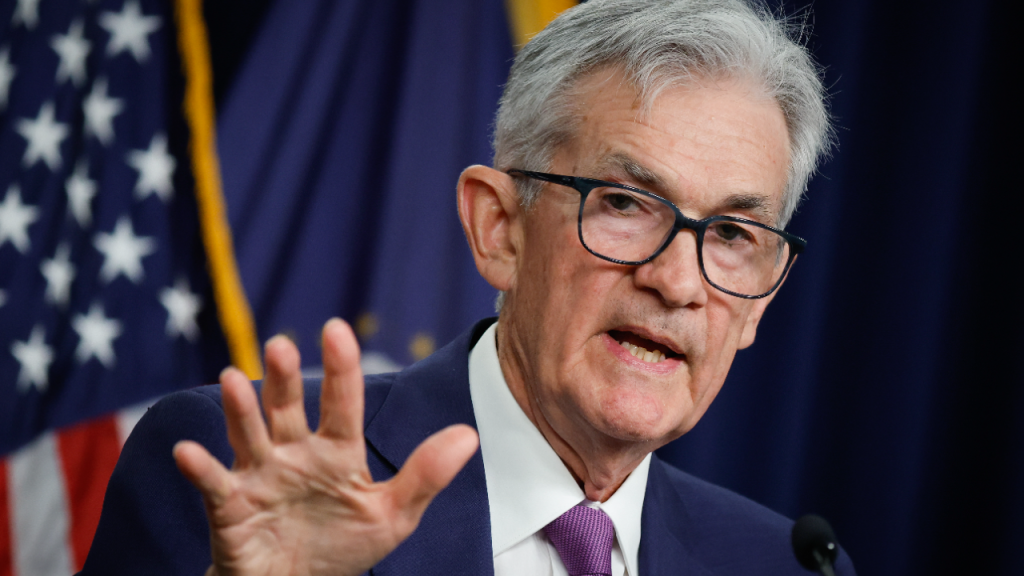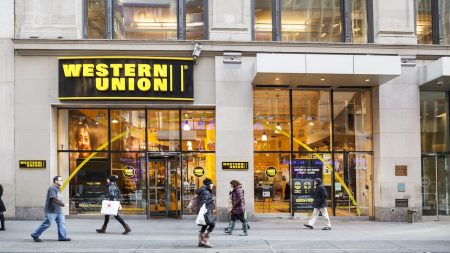The Federal Reserve voted on Wednesday to keep interest rates steady for the third consecutive meeting even while acknowledging that unemployment could increase, a decision that signals officials are more concerned about inflation than the possibility of a recession.
The announcement means the key interest rate that influences how much you pay to borrow money — from credit cards and auto loans to home equity lines of credit (HELOCs) and adjustable-rate mortgages — will continue to hold near a decade-plus high. The federal funds rate is in a target range of 4.25-4.5 percent, the highest since 2007.
Returns on savings accounts will also remain competitive thanks to historically high interest rates. Savers who’ve been parking their cash in a high-yield savings account have been earning an inflation-beating return for more than two years.
Fed officials haven’t touched interest rates since December, when the Federal Open Market Committee (FOMC) cut borrowing costs for a third straight meeting. The Fed’s borrowing benchmark is now a full percentage point off its peak, but the U.S. central bank’s next moves are looking increasingly uncertain amid President Donald Trump’s volatile trade war.
On the one hand, the magnitude of tariffs from the White House could lead to supply shortages and push up prices. On the other, consumers are already bracing for higher costs and could cut spending, prompting some businesses to lay off workers.
In this environment, the Fed’s two goals – keeping prices stable and maintaining a healthy labor market – are in competition with each other. Economists have a word for it: stagflation.
“Uncertainty about the economic outlook has increased further,” officials wrote in their post-meeting statement. The FOMC “is attentive to the risks to both sides of its dual mandate and judges that the risks of higher unemployment and higher inflation have risen.”
It creates a tricky situation for the U.S. central bank. Typically, policymakers cut rates to help the economy and raise rates to deflate price pressures. A stagflationary environment, though, might call for both — moves that could come with trade-offs. Cutting rates might make inflation worse. Keeping rates high could make the economic slowdown more pronounced.
The U.S. economy doesn’t look like it’s taking a turn yet, keeping Fed officials in wait-and-see mode. The unemployment rate is near the Fed’s estimate of maximum employment, while inflation is now just 2.4 percent — the closest it’s been to the Fed’s target since a combination of pandemic-era stimulus and supply shocks resulted in the worst inflation crisis in four decades.
Still, had fears of higher prices from tariffs not been on the table, the U.S. central bank might’ve considered cutting borrowing costs. Souring sentiment and an unexpectedly weak jobs report last fall prompted officials to go big to prevent a broader economic slowdown, cutting borrowing costs by a half a percentage point at their September 2024 meeting. Now, unemployment is a touch higher (4.2 percent) than it was last fall. Meanwhile, consumers’ economic confidence has dropped to its lowest level in 14 years.
In a post-meeting press conference, Fed Chair Jerome Powell said the U.S. economy isn’t facing stagflation yet, but he warned that there’s a “possibility” both the inflation picture and the job market could worsen. He noted it as one of the reasons officials kept rates steady.
“We think we’re in the right place to wait and see how things evolve,” he said. “We don’t feel like we need to be in a hurry. We feel like it’s appropriate to be patient.”
A growing concern is that, if the Fed does end up cutting interest rates, it might be for “bad” economic reasons: slower growth and a weaker job market.
It is tempting to romanticize the idea of lower interest rates, particularly from a borrowing perspective. But the reason for lower interest rates is very important. We want interest rates to come down because inflation pressures are easing, not because the economy is weakening.
— Greg McBride, CFA, Bankrate chief financial analyst
Wondering what the Fed’s latest decision means for you? Here are some key takeaways from the Fed’s May meeting and how they impact every aspect of your finances.
The Fed’s interest rate decision: What it means for you
Savers
Finding the best place to park your cash is more crucial than ever, as recession fears rise and tariffs threaten to reignite inflation.
If you’re keeping your money in a traditional brick-and-mortar bank, odds are you probably haven’t been rewarded by the Fed’s rapid post-pandemic rate hikes. The national average yield on a savings account is just 0.47 percent, more than 10 times less than what the highest-yielding online bank is currently offering. As of May 7, that top annual percentage yield (APY) is 4.4 percent, according to data tracked by Bankrate.
Here’s how big of a difference that could make you: Say you park $10,000 in an account paying 0.5 percent a year in interest. You’d make about $50 over a 12-month period, assuming rates stayed the same for the entire year, according to Bankrate’s saving calculators. That compares with over $440, had you kept your cash in a nontraditional online bank paying a 4.4 percent APY.
Those funds can help you grow your emergency fund even faster and ensure that your money doesn’t lose any purchasing power. Just be sure to keep your money where it’s liquid — and safe. Bankrate’s picks for the best high-yield savings accounts are all backed by the Federal Deposit Insurance Corp. (FDIC).
Meanwhile, if you don’t mind tying up your funds, certificates of deposit (CD) are also still paying the highest yields in over a decade. Those deposit accounts offer fixed rates in exchange for savers locking up their cash until maturity — meaning your yield will stay the same, even if the Fed does eventually cut rates.
Borrowers
Even if the Fed does end up cutting interest rates, they could do little to help borrowers access credit if they happen on account of a slowing economy or, worse, a recession.
Tougher economic environments might cause financial firms to get pickier about who they approve, such as requiring more income, less debt or a higher credit score. Bankrate Industry Analyst Ted Rossman says this might already be happening. Rates on the Blue Cash Everyday® Card from American Express, the Amex EveryDay® Credit Card and the Amex® EveryDay Preferred Credit Card increased between April and May, likely related to rising recession fears, Rossman said.
Keeping your credit score in tip-top shape can significantly improve your chances of getting approved for a loan at the most competitive rate possible. Applicants with credit scores under 670 (at 64 percent) were more than twice as likely as those with exceptional credit to face a rejection (at 29 percent for applicants with scores between 800-850), according to Bankrate’s Credit Denials Survey from March.
On-time payments and utilization are the two categories with the most significant impact on your score.
Eliminating any high-interest debt can also free up some cash that you can use to recycle back into your emergency fund. Bankrate’s rankings of the best balance-transfer cards currently give Americans an introductory 0 percent annual percentage rate (APR) for up to 21 months. That means you’ll be able to make payments toward your balance without having to pay anything in interest — helping you accelerate your debt repayment.
Homeowners and homebuyers
Even if the Fed cuts interest rates, there’s no guarantee that it’ll take away some of the sting of historically high mortgage rates.
The Fed has cut interest rates a full percentage point since Sept. 18, yet the average 30-year fixed-rate mortgage has risen 61 basis points. Mortgage rates track the 10-year Treasury yield, not the fed funds rate. And yields on those government bonds have risen, first as fears of a recession receded — and later as fears of higher inflation from Trump administration policies gripped bond investors. Other factors, such as federal deficits and investors’ appetite for government debt, are propping up bond yields, too.
Typically, though, yields fall when investors start to brace for an economic slowdown — moves that could also weigh on mortgage rates and home price growth. But there are other tradeoffs. Americans, for instance, might have less confidence in making big-ticket purchases like a home if joblessness or fears of layoffs increase, according to McBride.
If you’re still priced out of the housing market, take advantage of opportunities that can help set yourself up for home ownership in the future. Those include bolstering your savings and income, as well as paying down debt. Meanwhile, homeowners should consider refinancing if they’re able to get an interest rate that’s at least half a percentage point lower than what they’re currently locked in to, McBride said.
Investors
Bumpy stock markets can always test investors’ resolve, but usually, financial experts recommend tuning out the noise — especially if you aren’t going to need your funds within the next few years.
Stock prices can rise just as quickly as they fall. Case in point: The S&P 500 is now just about 9 percent off its all time mid-February high after sinking as much as 19 percent in early April in response to Trump’s April 2 “Liberation Day” tariffs. Had investors sold when their investments were in the red, they would’ve locked in the loss — and missed out on the rebound.
Read the full article here












